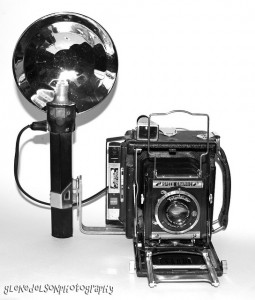The Beginning Photographer’s Quick Reference Glossary –
Photography is an amazing hobby. It allows us to see the world from a different perspective. The camera lens can help filter out some of the louder or busier parts of life, and put focus on one particular view. Whether you are a beginner or a more seasoned photographer your camera will let you see things that might go unnoticed by the naked eye. If you are not currently involved in photography, I encourage you to pick up a camera and start to see the world just a little differently.
It allows us to see the world from a different perspective. The camera lens can help filter out some of the louder or busier parts of life, and put focus on one particular view. Whether you are a beginner or a more seasoned photographer your camera will let you see things that might go unnoticed by the naked eye. If you are not currently involved in photography, I encourage you to pick up a camera and start to see the world just a little differently.
The best way to start your photography hobby is to start taking pictures. I know, that sounds a bit simplistic, but practice will help you decide your style. There are many great photography classes, both on line and in a classroom that would be helpful to any beginner. Don’t be afraid to give one a try if you are serious about becoming an amateur photographer. There are some terms and phrases that are unique to photography. I am including some of these for you below. I hope they will be helpful to you as you start your journey as a beginner in the field of photography.
Quick Reference Glossary for Amateur Photographers
Auto-focus- much as it sounds, auto-focus is the automatic focusing of distances on your camera lens. Most amateur photographers will have a camera with an auto-focus feature. Professional cameras often require a manual focus.
Available Light -the light that is naturally available in a particular shot. Available light is not provided by the photographer, but by artificial lighting or flash.
Background -the part of a photographic scene that sits behind the primary subject.
Black and White – refers to photos done in monochromatic shades. While often thought of as shades of black and gray, black and white photography is actually an array of subtle colors including blues and browns.
Camera Angle -the position of the camera in reference to the subject of the picture. Pictures are often shot from above or below to change the viewpoint of the photo.
Candid Shots – excellent for amateur photographers candid pictures are not posed and are often taken during an activity. Many times the subject is unaware they are being photographed.
Close Up – photos taken at a closer than normal range. These photos typically show great detail of the subject.
Composition- the arrangement of everything that is included in a scene; light, space, subject and tone. The composition will set the mood for the finished product.
Contrast – the range between the light and dark areas of the photo. High contrast pictures have extreme differences between the dark and light areas. Low contrast photos are much more subdued.
Dark Room – the space dedicated to the development of photos and prints from film
Distortion – any change in the typical form of any element of a photograph. Distortion may cause the lines to be blurred or look out of proportion. It can be both loved and hated by photographers, depending on what they were hoping the finished photo would look like.
Exposure – the quantity of light that hits the film, or in digital photography the sensor, when taking a picture.
Enlargement – taking a print and increasing it to a larger size.
Filters – transparent accessories that change the character of the light. Filters can be used to soften or sharpen the lines of a photo or just change the effect of the light on the subject.
Focus – the clarity of a picture. Focus can vary based on the desired result, from soft to sharpened focus.
Lens -a ground or molded piece of glass or some other transparent material, designed to converge or diverge and form an image.
Saturation -involves one of the most important aspects of color photography-the intensity of color in a finished photo. Saturation can be achieved by the type of film used or the exposure.
Shutter – the shield or curtains, that move across the film gate. The shutter allows light to strike the film over a specific period of time.
Tripod – a three legged device used to keep the camera steady when taking long-exposure shots. Tripods typically fold up to make them a portable piece of equipment.
Viewfinder – the viewing screen that allows the photographer to see the composition before the photo is taken.
The twenty terms listed above are just a small sampling of the many phrases you may encounter while learning the fine art of photography. Just remember that everyone starts the hobby with the status of beginner. Don’t be afraid to do a little research as you run across things you haven’t learned yet. Before you know it you will join the ranks of amateur photographers everywhere. Enjoy the learning and don’t be afraid to view the world through the lens of the camera.

